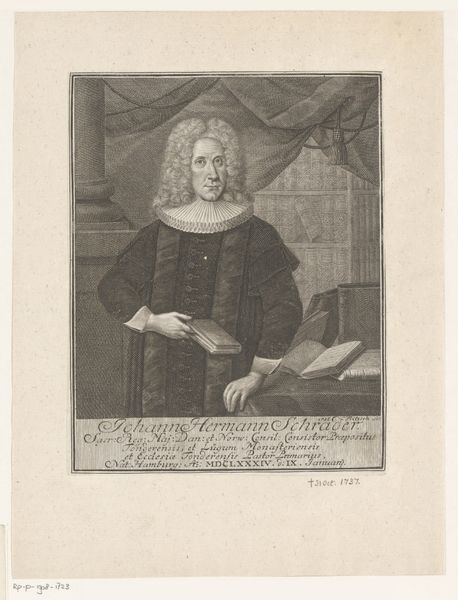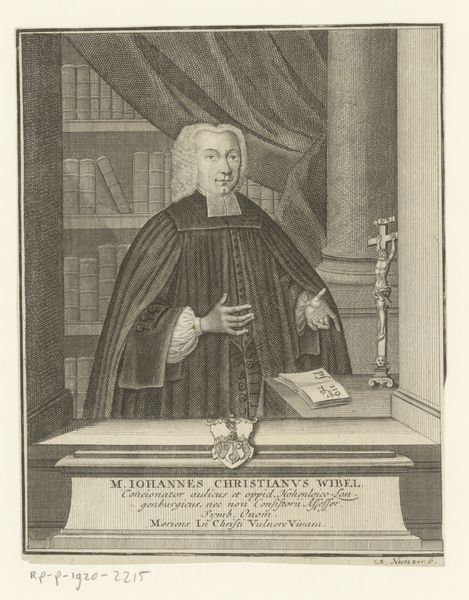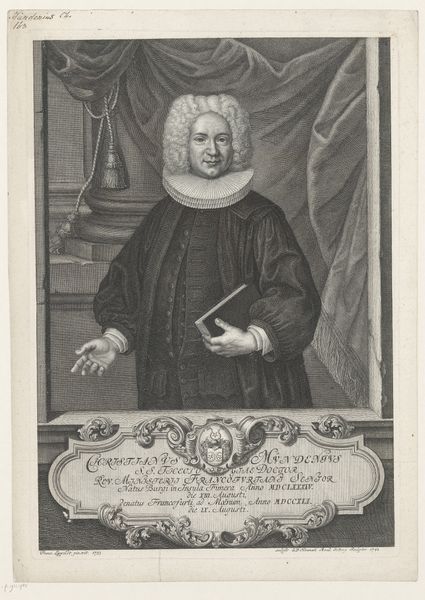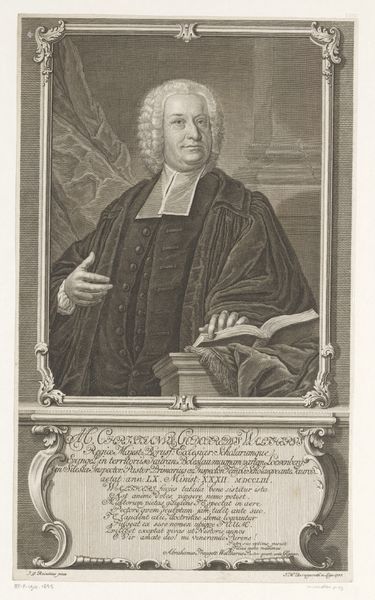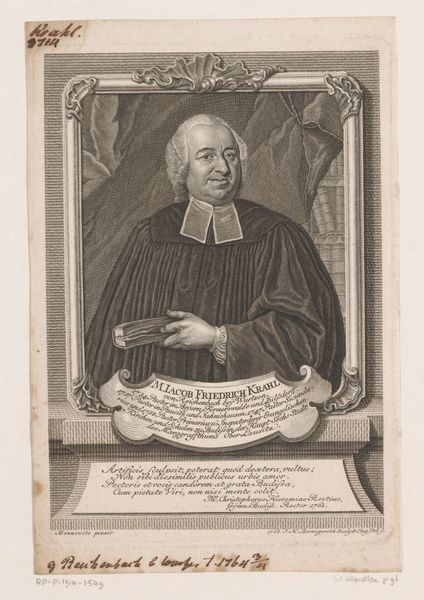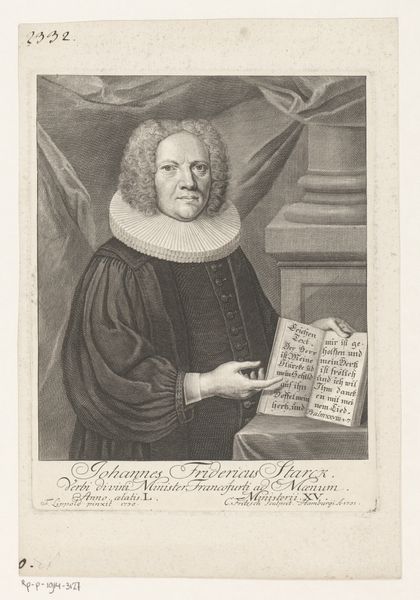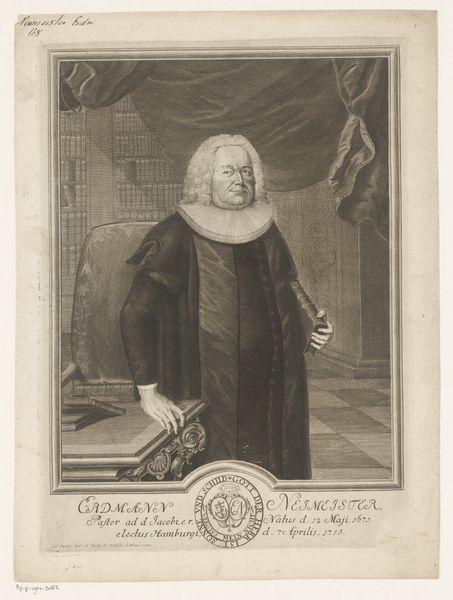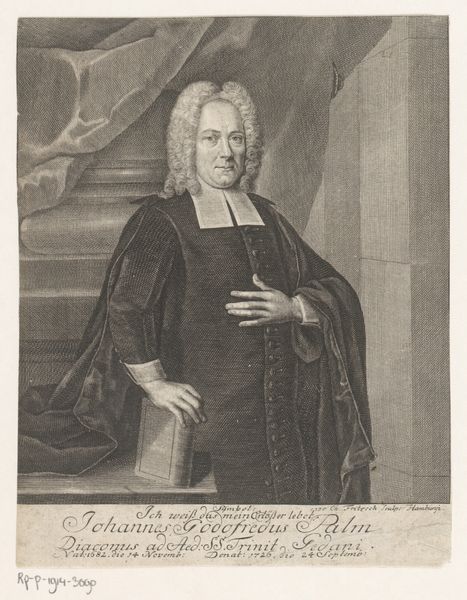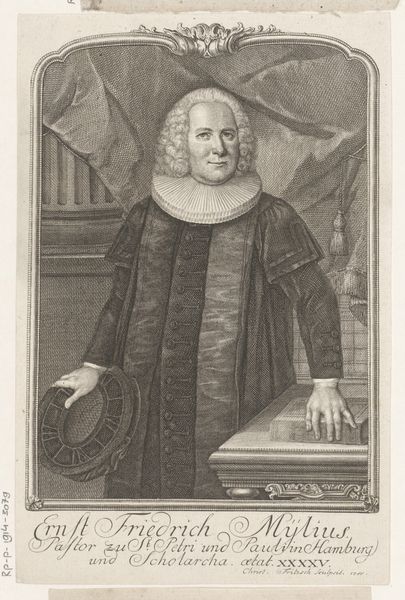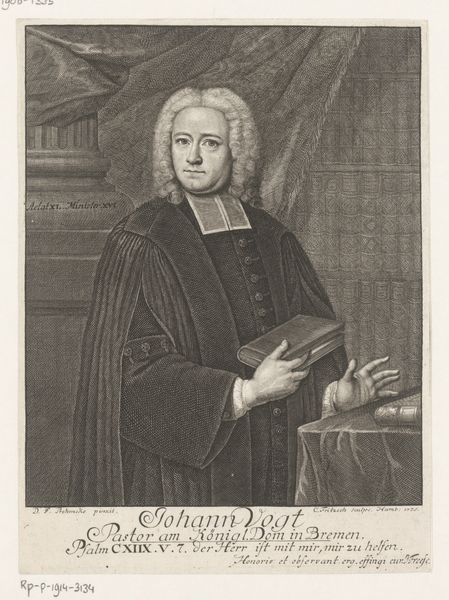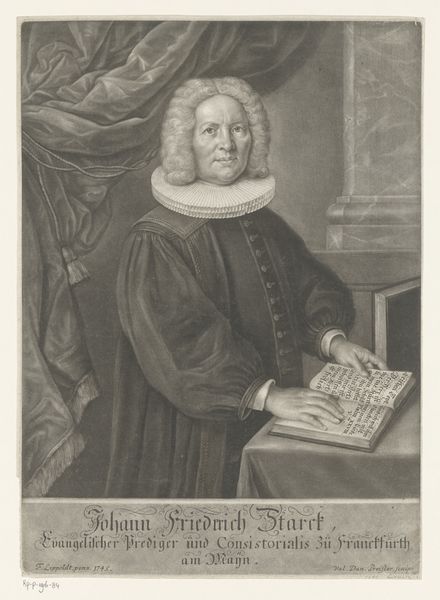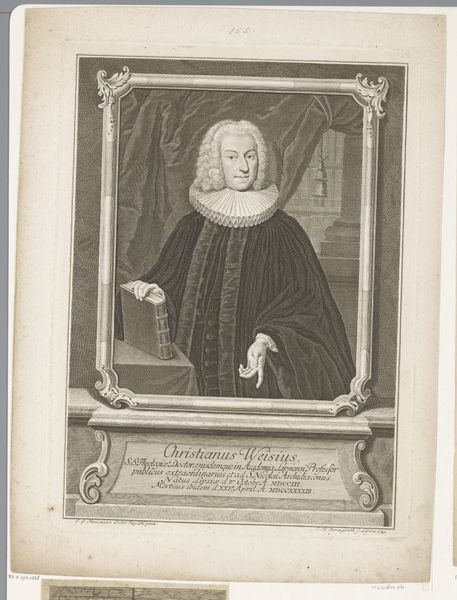
engraving
#
portrait
#
baroque
#
line
#
history-painting
#
engraving
Dimensions: height 348 mm, width 209 mm
Copyright: Rijks Museum: Open Domain
Editor: This is a fascinating engraving! It's a portrait of Theodosius Gottfried Fuchs, created sometime between 1736 and 1767 by Johann Martin Bernigeroth. I'm immediately struck by the figure's direct gaze and the symbolic elements like the book and the curtain. What do you see when you look at this piece? Curator: Well, it is impossible to ignore the open book which presents, at first glance, something quite strange to our modern eyes. But the crossed palms symbolize marital union, referencing Fuchs’s role not only as a minister but the paterfamilias, a provider and protector, charged with ensuring a certain kind of domestic order. How interesting it is that religious calling and domestic role could be represented in this manner. What does the gesture convey to you? Editor: That’s fascinating! The hand gesture…it almost feels like he's presenting the book to us, the viewers. Maybe as if he’s saying "This is my doctrine; judge me by it"? Curator: Perhaps, or to consider the historical frame and his profession. Is it possible that the open book is as much of a performative tool, akin to how a Baroque artist employed the open curtain, offering us insight into an inner world, a sanctum? The portrait suggests a curated display of identity. What does this choice of composition reveal about Fuchs and the cultural values of his time? Editor: I guess it speaks to the importance of religious authority and knowledge then? It makes you wonder how much control Fuchs had over this representation of himself. Curator: Precisely. Considering such details enhances our comprehension of not only the individual but also the era's visual and societal symbols. Editor: I hadn't considered the image as an intentional construction. It gives the engraving an entirely different, richer dimension.
Comments
No comments
Be the first to comment and join the conversation on the ultimate creative platform.
